THE JOY OF DYNAMAX-6 OBSERVING
EXPERIENCES AND TESTS
by
Richard "Rik" Hill
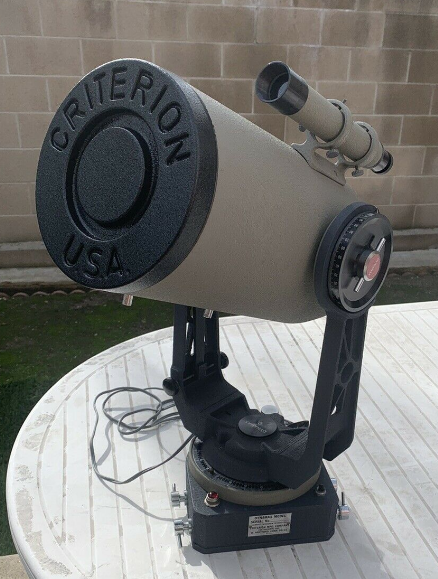 I have been and amateur astronomer since 1957, more seriously so starting in 1966 when I got
my Criterion RV6 Dynascope. It was a wonderful instrument and even introduced me to the
girl in 1972 that would become my wife a couple years later. But that’s another story.
I have been and amateur astronomer since 1957, more seriously so starting in 1966 when I got
my Criterion RV6 Dynascope. It was a wonderful instrument and even introduced me to the
girl in 1972 that would become my wife a couple years later. But that’s another story.
After a stint in the Navy I continued my observing and in the 1970s joined the ALPO and
AAVSO becoming more active with the latter at first. My wife, also an astronomer, and I
co-founded the Sunset Astronomical Society with Bill Albe, in Midland, Michigan, serving
the tri-city area of Midland, Saginaw and Bay City . At that time I was working as an
optician in nearby Saginaw. We bought our first Celestron-8 in the late 1970s which open
the next level of observing to us. It was a great ‘scope and would not be our last
Celestron by any means, most of good quality, though several were not. After intense
variable star observing in the 1970s, through the 1980s I became increasingly involved
with the ALPO and it’s Director Walter Haas. In 1982 he asked me to found the Solar
Section of the ALPO which has been a big part of my amateur astronomical life ever since.
Observing became a career in 1979 when I became the Resident Observer at the Warner &
Swasey Observatory of Case Western Reserve University on Kitt Peak. With the move to
Arizona astronomy became more than just a hobby and for 13 years I enjoyed the work there.
When that job ended I landed a position at the Lunar & Planetary Lab., at University of
Arizona working in the Planetary Occultations and Planetary Atmospheres Groups. In
astronomy, grants come and go and these wonderful positions ended around 1999 when I was
picked up by the Catalina Sky Survey, and began searching for potentially Earth impacting
asteroids until my retirement in 2015. It was a great working career doing what I loved
and had done as an avocation since my childhood. Like they say, do what you love and you
don’t work a day in your life!
During these years we owned well over a dozen telescopes up to the Celestron-14 and I
fabricated optics up to 18” diameter. My first fabricated telescope mirror was a 6” f/10
back in the 1960s but I never got that coated and mounted (lack of money) which I now
regret. Since then optics had been as much a part of my life as astronomy but in later
years had to be abandoned.
I mention all this to demonstrate that having held these positions in my working career, I
am experienced in the evaluation and use of optical instrumentation. I’ve seen good and
bad over 55 years (as of 2020). I had heard the stories of the Dynamax being of inferior
quality, believed them and thus stayed away from that telescope line. Then in late 2019 I
became incapacitated to the point where I could not roll my heavy 8” f/20 TEC Mak-Cass out
of my ‘roll-out’ observatory. At first I resigned myself to thinking I would not be
observing for some months, harsh for a lifelong astronomer. It was just about
Christmas time I saw an ad for a 6” Dynamax at a VERY reasonable price and since I was
curious about all the bad reports over the years, what did I have to lose but a few
hundred bucks.
So I got the Dynamax-6 (photo above) and when I got it was surprised to see it had hardly
ever been used in its 40+ years lifetime! Since I was suffering from a back/hip injury at
the time, brought on as a delightful side effect of age, my mobility was severely limited at
the time so this telescope was perfect to permanently put out back. The idea was to set it
up on the patio in our walled in yard and just leave it, protected with a cooler cover to
keep it dry if it rained. As the heat of a Tucson summer came upon us it was necessary to
add a cardboard box to this cover painted with roof coating to protect from the harsh sun
and temperatures underneath the cooler cover and the monsoon rains (that never came to Tucson
in 2020!). This has worked well to keep the temperature of the telescope below our ambient
temperatures of 110F in June/July. It got fairly regular use from March on but as time for
my surgery to replace the hip came (set for the last day of summer on 9/21) it became
increasingly difficult to even use it in this set up!
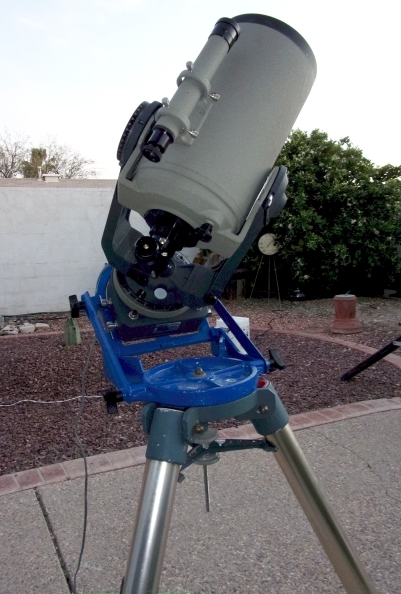
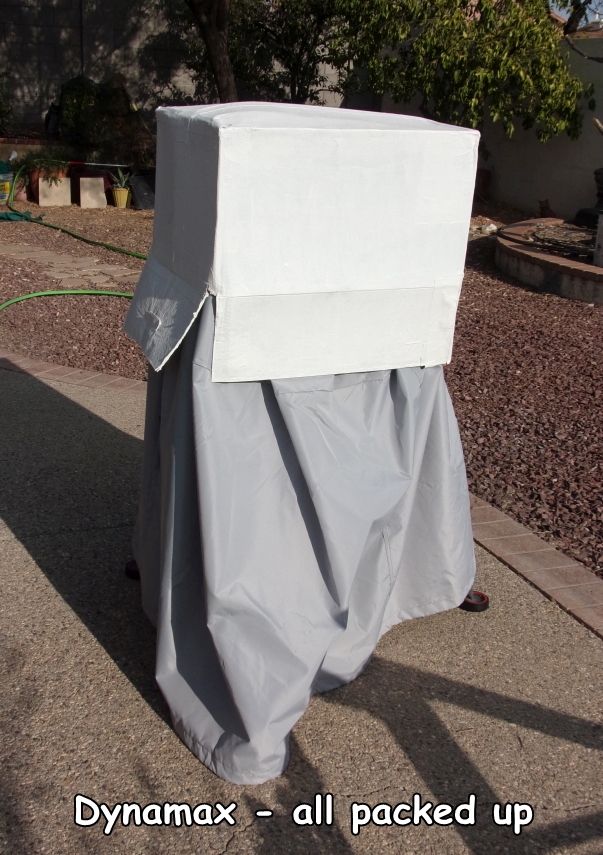
The first night I was able to use the telescope was March 29th. There was a nice crescent
moon high in the sky so that was my first target. A quick perusal of my lunar image
gallery, the Jim Loudon Observatory (JLO) Lunar Image Database , will show that I am and experienced lunar
imager. Jannsen was on the terminator making a tempting target. The results were surprising
considering I had not done more than quickly check the alignment and after processing I had
quite and acceptable image!
The next night I was determined to get into the alignment more rigorously. Not having any
user’s manual I was at a disadvantage. As I tried to align the telescope, and it only
needed a minor tweek, I was surprised to see that the screws on the secondary were doing
nothing! After a while I discovered something that may have led others, who did not have a
user’s manual or not read their manual, to a poor evaluation of the telescope. On top of
the normal three secondary alignment screws was a plate as big as the secondary, with three
screws in it! I wonder how many users spent time thinking they were aligning it, and just
gave up not seeing change? I removed the plate and its 3 screws and set it aside for good.
Underneath were the true alignment screws and a good alignment was achieved in minutes. A
very nice image of the Theophilus region was obtained and made me eager for an even better
night.
I was impressed with what I was seeing from this telescope and over the next month decided
to explore further what this instrument could do. I did some imaging of Venus, the end of
its evening apparition for 2020. In April I was able to image the clouds on Venus with the
AstroDon UV filter and followed them until mid-May when the phase became disadvantageous
to do so, then I followed the slender phases until it was too low to image.
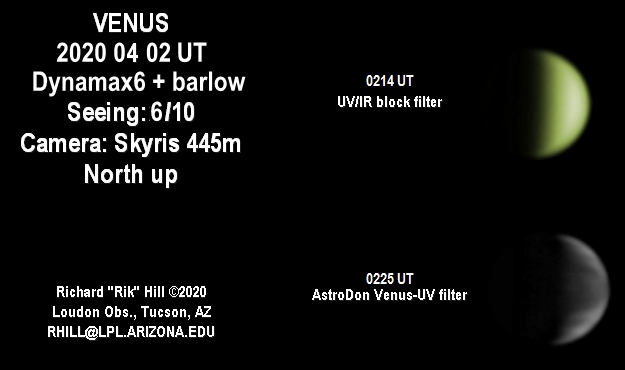
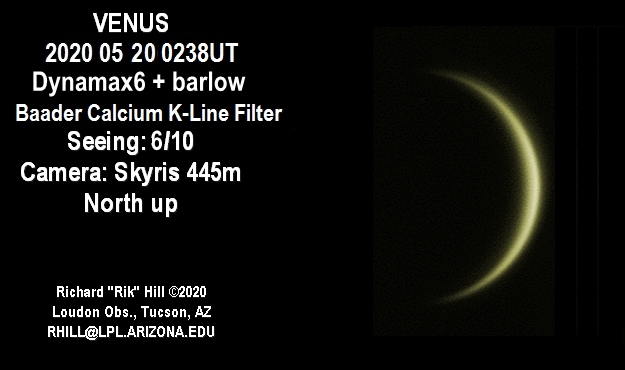
During this time Venus and Mercury went through a close conjunction. Just for fun I took
images of Mercury on 5/18 with my color camera (Skyris 132c). Now I had never, NEVER had
any success imaging Mercury with any telescope except with the 61” Kuiper telescope on Mt.
Bigelow in the Catalina Mountains north of Tucson. But this was professionally with a large
echelle spectrograph so that doesn’t count. This first effort with the Dynamax was very
encouraging and the next night I had much better results using the monochrome camera
(Skyris 445M) and clearly saw a gibbous disk.
By improving imaging and processing techniques over the next few nights I was able to start
teasing out some surface details on the planet. This was not only the first time I was able
to image the planet but image the surface of this planet! Towards the end of this
apparition I followed the phases of Mercury as I did Venus, again for the first time in my
life!
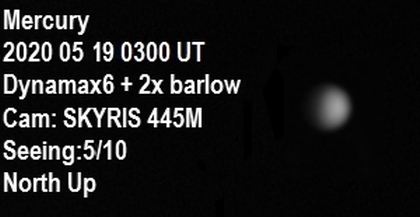
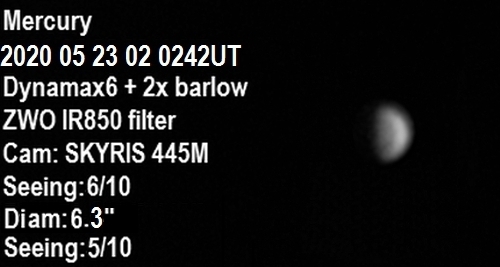
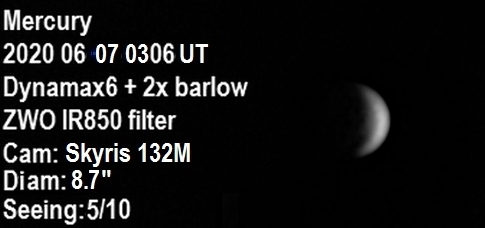
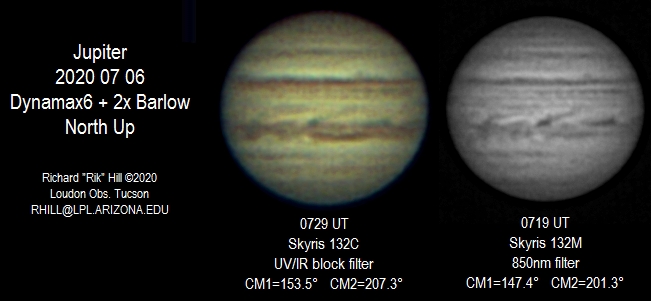
Also available in the evening sky were the planets Jupiter and Saturn. I turned the
Dynamax on them as well and was not disappointed. I caught much detail in the belts of the
great planet Jupiter and even the shrinking red spot. There was a lot of activity on Jupiter
this year as you can see here.


Saturn also showed splendid detail almost as good as my large 8” f/20 Mak-Cass! At
opposition I was able to combine and image from before opposition and at opposition to show
the backscatter brightening of the rings with respect to the ball of the planet. These
images are much more than I expected from a 6" telescope let alone a Dynamax!

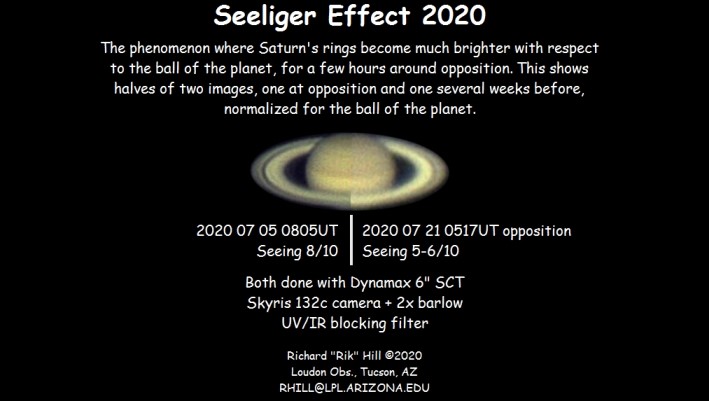
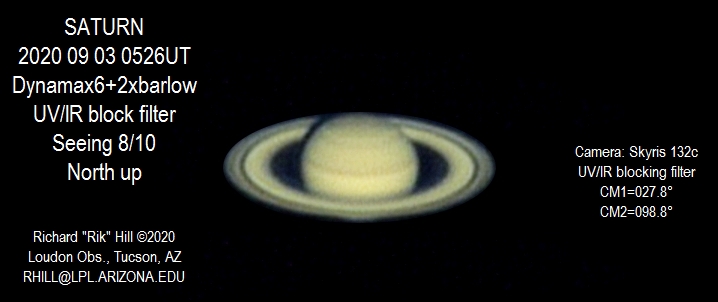
Then one night in August, when setting up on Saturn I by accident imaged Saturn with a half
second exposure using the color Skyris 132c camera. I decided to process it for fun and
found I had imaged a number of Saturnian moons!! I never thought that this would be possible
with such a small telescope.
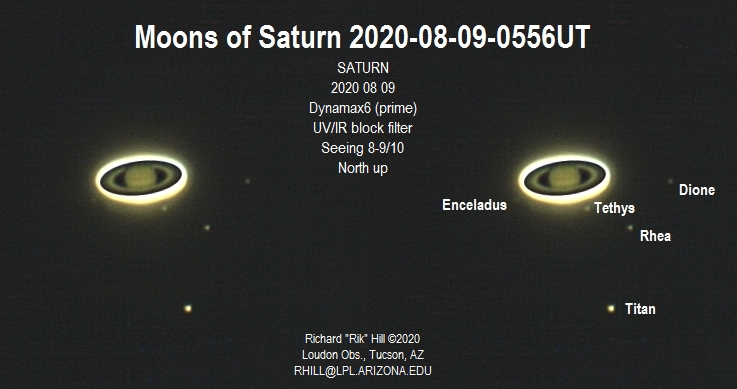
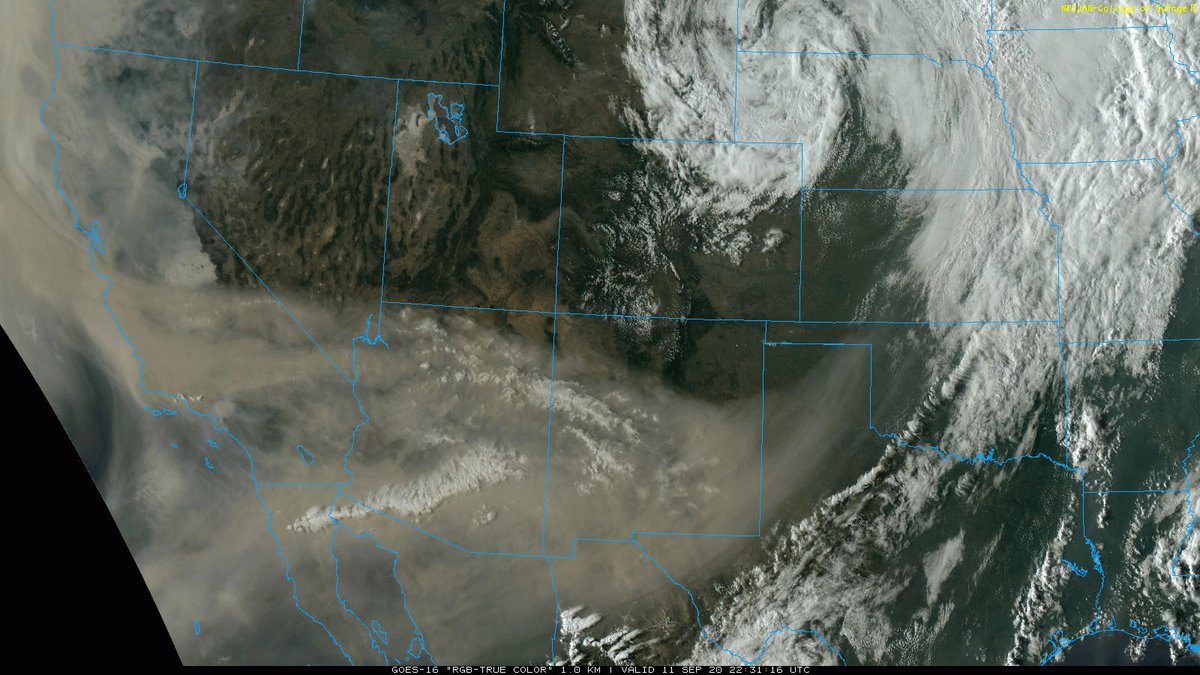
Weather image
from Sept. 11 showing the flow of smoke down the west coast into the desert
southwest.
Our weather this particular summer was terrible. It was our normal monsoon but we were
getting no measurable rain, just lots of clouds and smoke from California fires. So the next
opportunity I had to repeat this was a month later! This time I did a full second exposures
(the max for this camera) for 200 AVI frames and processed that. The results were VERY
rewarding, but this was the last usable night for two weeks due to the tremendous amount of
smoke from all the fires in Washington, Oregon and California that was being pushed south
out of those states and then into AZ. Our skies were so bad that even planets were obscured.

But nothing shows the quality of a telescope like double stars, another one of my loves.
This tests the resolution of the instrument. In April there were two of the more attractive
triple star systems available in the early evenings. The first was Beta Monocerotis. When
first seeing this system observers always let out with an exclamation at its beauty. But
with the separations of 7.2” and 2.9” this was not a very severe test.
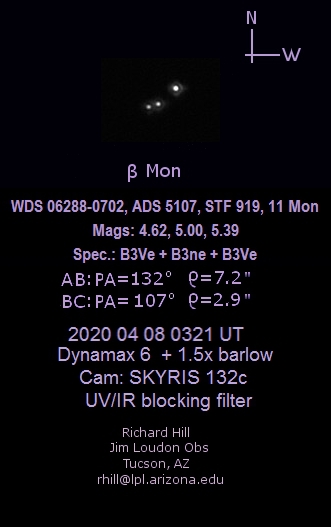
A better test of the telescope was the visual triple star was Zeta Cancri with separations
of 6.3” and 1.0”. This was closer to the 0.76” limit for the aperture and the split was
clean so this was a good sign but still above the limit for the aperture. So a month later I
tried on Alpha Comae Berenices which at 0.5” was 0.25” below the limit for this telescope.
Imagine my surprise when I processed the image and got an oval image, elongated in the right
P.A.!

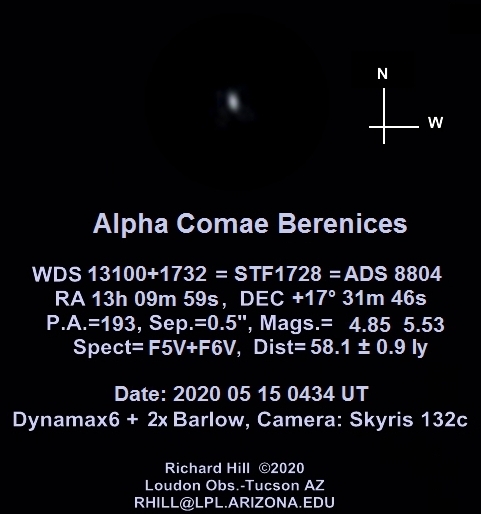
Due to mountains and trees to my east, plus my inability to stick with a late observing
schedule due to the bad hip, it was not until September that I was able to do Mars. I was
amply rewarded by my efforts with yet another great Dynamax-6 image. I was delighted to see
this come out of the processing. It was interesting seeing a Hellas Basin clear of frost
with dark features and I was glad that no dust storm had blown up before I could observe the
God of War.
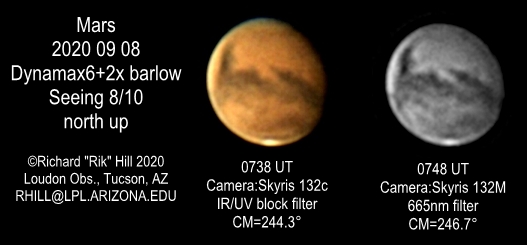
Sure there are some improvements that can be made. As with any of the SCT and MCT
telescopes, the micrometer focus has hysteresis, more than I would like, and without some
inventions of my own, it is impossible to focus accurately enough. I added simple lever arm
devices made with commonly available popsicicle sticks attached to cups that go over the
focus knob affording around a 10:1 fine focus control. This is similar to what I did with
every Celestron I owned, my current C5, my TEC 8” f/20 Mak-Cass (I used an old chemistry
heavy wire test tube holder) and even on my Questar where I used a simple clothespin.
Likewise declination control benefitted from a lever arm but all that was needed was 3:1 to
4:1 so shorter popsicicle sticks were called for as shown in the photo. This too has been
used on other SCTs and MCTs. In the case of the Questar hospital instruments were
refabricated to fit on the knobs. The drive, while sometimes noisy tracks nicely for hours
at a time with only minor corrections due to my sloppy polar alignment.
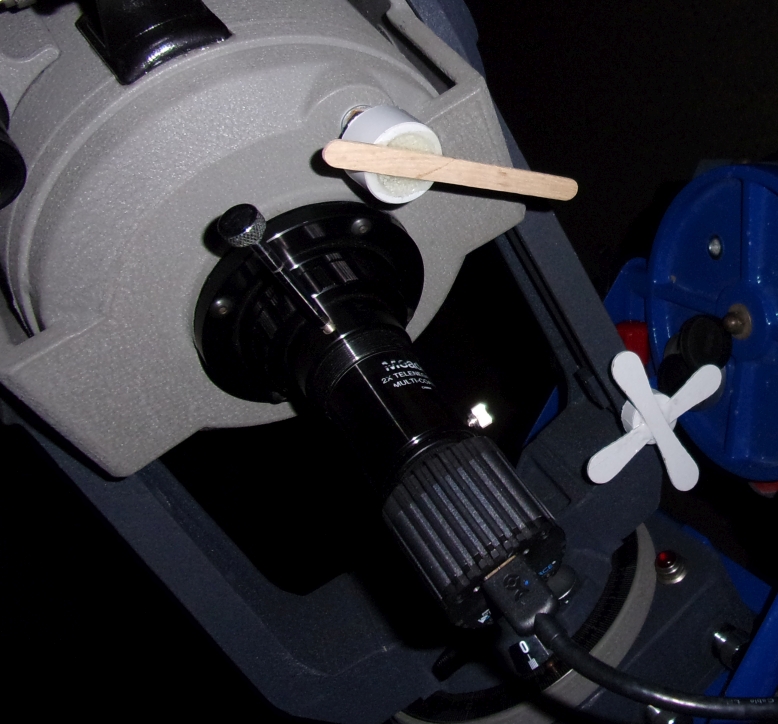
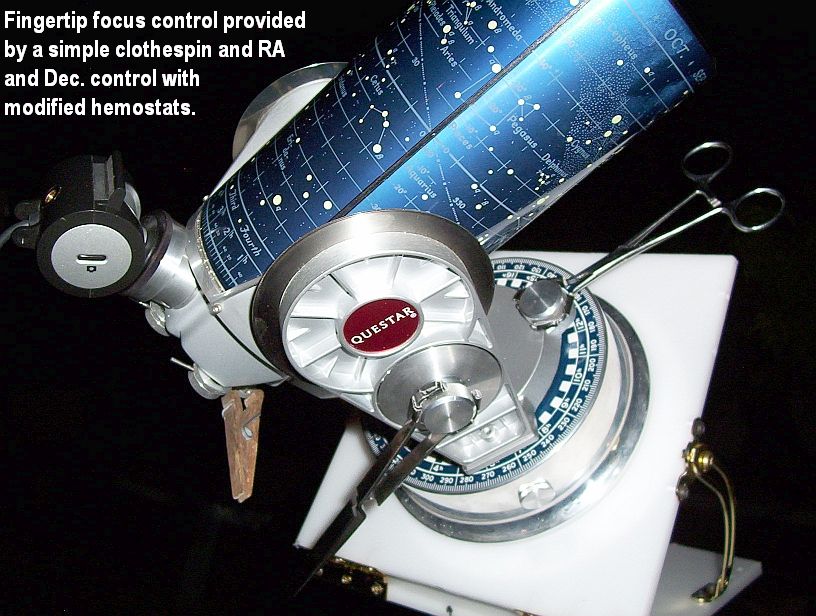
This was the telescope that was supposed to have inferior optics and bad mechanical
engineering. But after these and other tests, I am convinced that there is nothing wrong
with this Dynamax-6. I am happy with this telescope and will keep it. It is a good quality
instrument. The optics of this telescope showed Saturnian moons to 13th magnitude. It
resolved double stars to the limit for the aperture and showed them as elongated below
that. It tracks well and has no more vibration than any other fork mounted telescope.
Back to Rik Hill's webpage
Back to the Jim Loudon Observatory webpage
 I have been and amateur astronomer since 1957, more seriously so starting in 1966 when I got
my Criterion RV6 Dynascope. It was a wonderful instrument and even introduced me to the
girl in 1972 that would become my wife a couple years later. But that’s another story.
I have been and amateur astronomer since 1957, more seriously so starting in 1966 when I got
my Criterion RV6 Dynascope. It was a wonderful instrument and even introduced me to the
girl in 1972 that would become my wife a couple years later. But that’s another story.



















